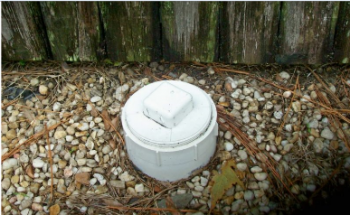
Sewer lines are owned by you and the City.
How to manage a blocked or backed-up drain can depend on where the issue is located. Get tips below.
Please report this to your landlord or superintendent.
This indicates a private plumbing issue. You may wish to contact a plumber.
When a resident experiences a blocked sewer service line and/or basement flooding, they should report the incident to 311. Reporting a call to 311 is important for several reasons:
You can submit a service request online or call 311 to have Toronto Water investigate.
Your request will be investigated by Toronto Water staff within four hours*. Please note that someone must be home in order for staff to access the property.
*During periods of heavy rain, which can result in high call volumes, it may take longer for staff to visit your home. Please contact 311 for the most up-to-date information.
Toronto Water staff will first investigate the sewers near your home to ensure they are draining properly. If they are not, staff will initiate an emergency work order to complete repairs and will notify you of the repair schedule.
If the sewers are draining properly, Toronto Water staff will inspect the sewer drain connected to your home. To investigate a blocked sewer service line, the water service technician will need access through a cleanout. Access to a working and accessible cleanout is essential to assist in troubleshooting basement flooding and/or a sewer service line problem. Cleanouts can normally be found on City property, on private property (inside or outside the home) or there is no cleanout. On private property, cleanouts are located in the basement or outside the home. If a proper cleanout and/or access to the sewer service line is not available, the water service technician will advise the property owner to install a proper cleanout before any investigation work can be performed. This may require the property owner to hire a licensed plumber.

Depending on the location of the cleanout, the water service technician will first investigate the City-side portion of the sewer service line using closed-circuit TV (CCTV) to determine if there is a blockage. If the City-side is clear, then the problem would be determined to be on the private side of the sewer service line, the property owner is responsible for conducting repairs and will be advised to call a licensed plumber.
If the blockage is found on the City-side but the water service technician is not successful in removing the blockage, the water service technician is then required to obtain a Natural Gas Sewer Safety Inspection clearance before any other work can begin. In some instances, this natural gas inspection, which is not done by the City, could take a day. Once this clearance is received, the water service technician will attempt to remove the City-side blockage by use of an electric snake and/or plunging the sewer service line.
If the obstruction found on the City’s portion of the sewer service line cannot be unblocked by an electric snake and/or plunging, the water service technician may create a work order for a specialized crew to take appropriate action (for example, excavation).
When a cleanout is on the inside of the property, and it is safe to do so, the water service technician may be able to plunge and/or CCTV the cleanout. If it is not safe to do so, the property owner will be asked to hire a licensed plumber to investigate the private side.
Depending on the extent of the work required, which may include excavation, repairing a City-side blockage can take several hours or up to two days. Staff will discuss the process and repair timelines with the homeowner.
Investigations could be significantly delayed due to storm events that impact the City’s customer service response levels.
To learn more on sewer cleanouts, see below:
Blockages are clogs in the pipe and are typically caused by items that are incorrectly flushed down the drain. The most common offenders are:
Get more details on what not to flush or pour down your drains and how to dispose of these items.
Roots from nearby trees can grow into the sewer pipe and cause holes and blockages.
Sewer pipes can break down and crack over time, especially those built in older homes that may contain cast iron or clay pipes.
During periods of heavy rain, the sewers can sometimes become full, which can cause water to enter the home. Learn more about the different kinds of sewers and view videos on how to protect yourself against basement flooding.